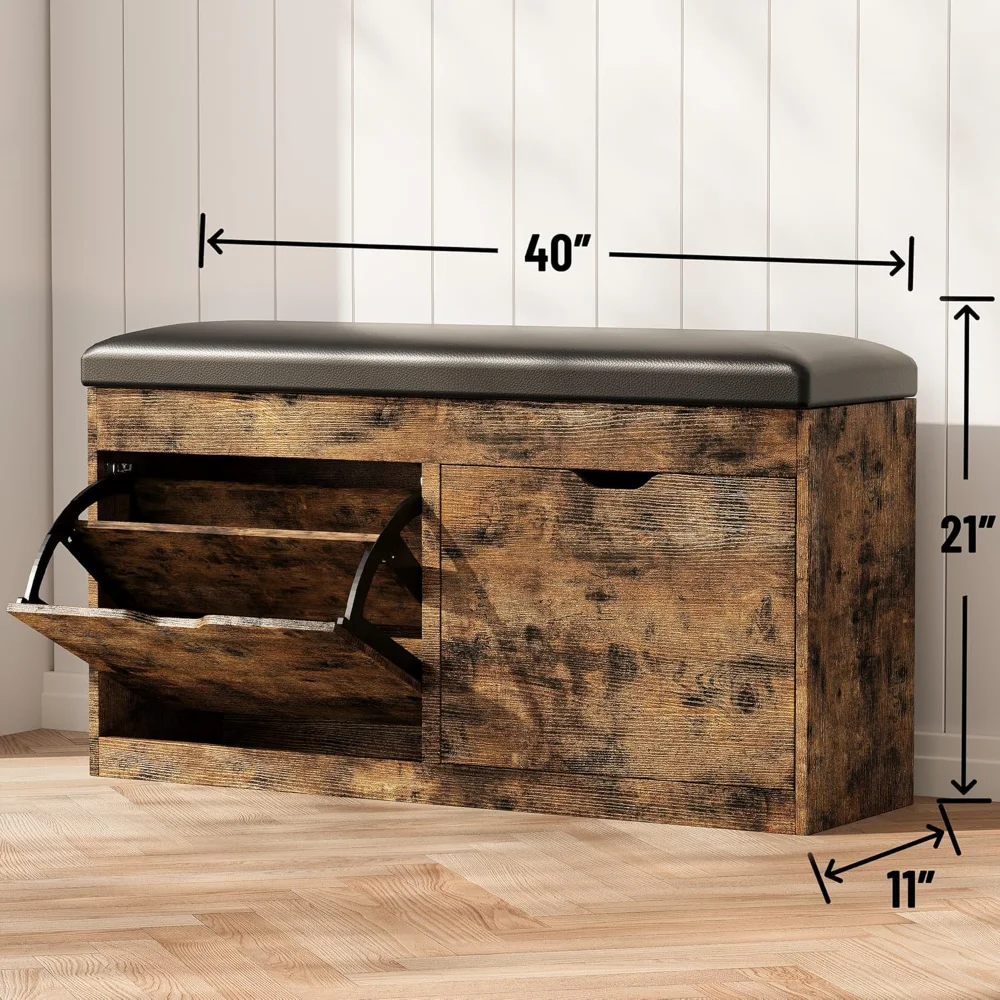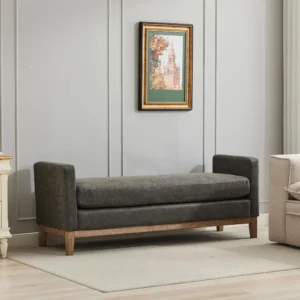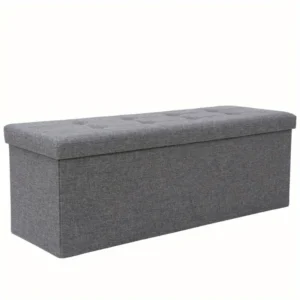Understanding the Versatility of Shoe Storage Benches
A shoe storage bench is a thoughtfully designed piece of furniture that elegantly combines two essential functions: comfortable seating and practical shoe organization. These dual-purpose pieces serve as the perfect solution for one of the home’s most challenging organizational areas—the entryway.
The average American household owns approximately 19 pairs of shoes per person, creating significant storage challenges, especially in high-traffic areas. Without proper organization, entryways quickly become cluttered with scattered footwear, creating both visual chaos and potential safety hazards.
Shoe storage benches offer several key benefits:
- Decluttering efficiency: They provide a designated home for everyday shoes, eliminating floor mess
- Space optimization: They utilize vertical space effectively in typically tight entryway areas
- Multifunctionality: They create a convenient seating area for putting on or removing footwear
- Enhanced home aesthetics: They transform utilitarian storage into an attractive furniture piece
When selecting the ideal shoe storage bench, consider both your practical needs and your home’s aesthetic style. The right bench should complement your entryway furniture with shoe compartments while offering enough capacity for your household’s regular footwear needs.
Many homeowners discover that proper shoe organization in the entryway dramatically improves daily routines and creates a more welcoming first impression of their home. With various shoe storage benches available in different styles, materials, and configurations, you can find the perfect solution for your unique space and needs.
Essential Considerations Before Selecting Your Bench
Space Assessment
Before purchasing a shoe storage bench, carefully measure your entryway. Consider both the footprint (width and depth) and the height if you’ll place the bench beneath coat hooks or artwork. Allow at least 24 inches of clearance in front of the bench for comfortable seating and shoe removal.
Shoe Collection Analysis
Take inventory of the shoes your household typically keeps by the door. Count how many pairs need accommodation and note any specialty footwear like boots or children’s shoes that might require customized storage solutions.
Primary Purpose Determination
Consider whether you prioritize seating comfort, storage capacity, or a balance of both. Some benches emphasize plush seating with moderate storage, while others maximize shoe organization with a simpler seating surface.
Style Alignment
Your entryway creates the first impression of your home. Select a bench that complements your existing décor, whether modern, farmhouse, industrial, or traditional. Consider how the bench will coordinate with other elements like wall color, flooring, and nearby furniture.
Material Considerations
High-traffic areas demand durable materials that can withstand daily use. Common options include hardwoods for classic appeal and longevity, engineered woods for affordability, and metals for contemporary designs with exceptional strength.
Budget Planning
Quality shoe storage benches typically range from $100 to $500, depending on materials, size, and features. Consider this an investment in both organization and furniture, with higher-quality pieces generally offering better durability and aesthetics.
Choosing the perfect bench for shoe storage involves balancing these practical considerations with your aesthetic preferences. The right solution should seamlessly integrate into your lifestyle while enhancing your home’s functionality. Many homeowners find that a well-designed shoe bench for the entryway becomes one of their most frequently used and appreciated furniture investments.
Open-Shelf Shoe Storage Benches: Accessible and Airy
Open-shelf shoe storage benches feature exposed horizontal shelving beneath a seating surface, typically arranged in one to three tiers. This design prioritizes accessibility and visibility, allowing users to quickly grab their footwear without opening doors or drawers.
Benefits:
– Superior air circulation prevents odor buildup and helps damp shoes dry more efficiently
– Easy visual inventory lets you see all available footwear at a glance
– Simplified construction often translates to more affordable pricing
– Lightweight appearance creates a less bulky visual footprint in smaller spaces
Limitations:
– Exposed shoes remain visible, which may create a cluttered appearance if not neatly arranged
– Limited protection from dust accumulation and pet interactions
– Minimal protection from sunlight exposure which can fade some shoe materials over time
Most open-shelf benches accommodate 6-9 pairs of adult shoes, depending on the design, with standard dimensions of approximately 36” width, 14” depth, and 18” height. Wood remains the most popular material for these benches, with oak and pine offering excellent durability. Metal frames with wooden seats provide a modern industrial aesthetic, while engineered wood options offer budget-friendly alternatives.
Open-shelf designs work particularly well in well-ventilated spaces where shoes frequently enter the home damp or dusty. Athletes and outdoor enthusiasts often prefer this style for its superior air circulation and the ability to quickly assess which shoes are available.
For maximum organization and visual appeal, consider open storage benches with divided sections that keep each pair neatly separated. Many homeowners find that a quality shoe shelf bench combines the perfect balance of accessibility and organization while maintaining a light, airy appearance in the entryway.
Closed-Storage Shoe Benches: Sleek and Protected
Closed-storage shoe benches conceal footwear behind doors, drawers, or drop-front compartments, creating a cleaner, more polished appearance in your entryway. These designs prioritize aesthetic minimalism while providing superior protection for your shoes.
Benefits:
– Creates a streamlined, uncluttered visual appearance
– Protects shoes from dust, pet hair, and direct sunlight
– Conceals less attractive footwear while keeping it readily accessible
– Often provides more substantial seating surfaces and sturdier construction
Limitations:
– Reduced airflow can slow drying of damp shoes
– Additional moving parts (hinges, pulls, slides) may eventually require maintenance
– Generally heavier and more substantial construction
– Typically higher price point than open-shelf alternatives
Closed-storage designs come in several variations, each with unique advantages:
| Door Type | Accessibility | Space Efficiency | Best For |
|---|---|---|---|
| Swing Doors | Moderate | Low (requires clearance) | Wide benches with ample space |
| Drop-Front | High | High | Spaces where forward access is limited |
| Sliding Doors | High | High | Narrow passages and tight spaces |
| Pull-Out Drawers | Very High | High | Maximizing vertical storage |
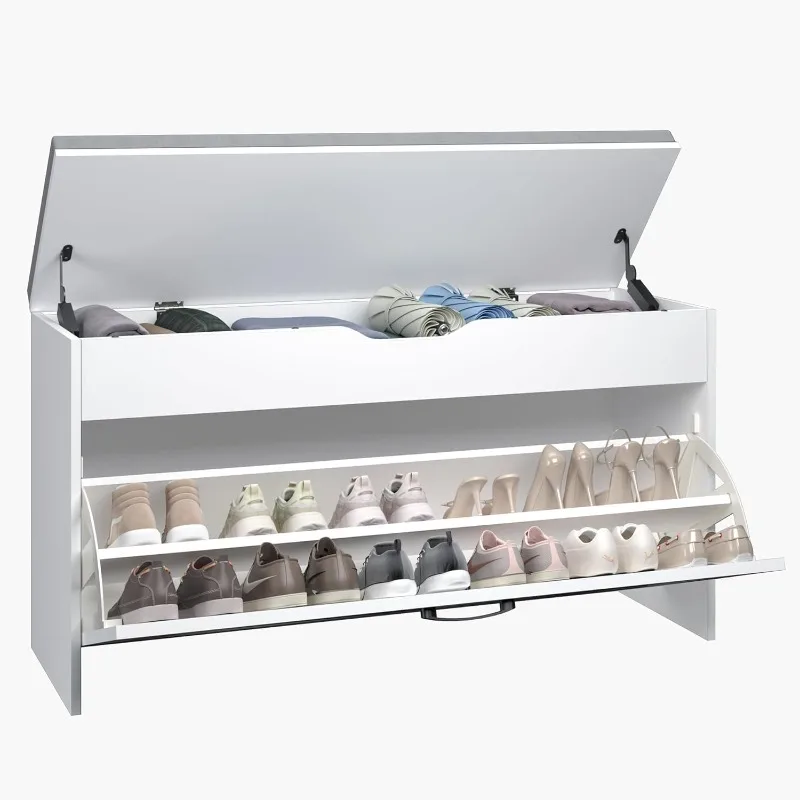
Materials for closed-storage benches tend toward sturdier options, with solid hardwoods like oak and walnut offering premium aesthetics and durability. Quality engineered woods with proper edge finishing provide more budget-friendly alternatives while maintaining an attractive appearance.
For entryways where visual tidiness is paramount, entryway benches with drawers offer elegant solutions that keep shoes and small accessories neatly concealed. The enclosed design creates a more formal appearance while still providing the practical seating and storage combination that makes these pieces so valuable.
Cubby Shoe Storage Benches: Organized Compartmentalization
Cubby-style shoe storage benches feature individual compartments or “cubbies” arranged in a grid pattern beneath the seating surface. This design strikes an effective balance between the visibility of open shelving and the organization of closed storage, creating dedicated spaces for each pair of shoes.
The uniform compartments encourage systematic organization while still allowing airflow around footwear. Most cubby benches feature 6-12 compartments, with each cubby measuring approximately 7” wide, 10” deep, and 6” tall—sufficient for standard adult footwear.
Benefits:
– Creates visual order through structured compartmentalization
– Prevents shoes from touching, reducing scuffing and damage
– Allows for personalized organization by user, shoe type, or frequency of use
– Maintains moderate airflow while reducing visual clutter
Limitations:
– Fixed cubby sizes may not accommodate all boot styles or larger shoe sizes
– Individual compartments can be challenging to clean thoroughly
– Less efficient use of space compared to open shelving
Organization strategies for cubby efficiency:
– Assign specific cubbies to family members to simplify morning routines
– Reserve lower cubbies for children’s shoes to promote independence
– Use upper cubbies for less frequently worn shoes
– Consider shoe orientation (heel-in vs. toe-in) to maximize visibility
Cubby designs typically employ solid woods or quality engineered wood products, with bamboo gaining popularity for its sustainable properties and natural appearance. For households seeking structured organization, the shoe cubby bench provides an excellent compromise between accessibility and order. The clear visual boundaries between compartments help maintain organization even in busy households with multiple users.
Upholstered and Cushioned Storage Benches: Style Meets Comfort
Upholstered shoe storage benches elevate the humble entryway piece into a true furniture statement, featuring padded seats covered in decorative fabrics or leather. These designs prioritize seating comfort while maintaining functional storage beneath.
The cushioned surface transforms a utilitarian piece into an inviting spot to sit while putting on shoes or setting down bags upon arriving home. The upholstery also provides an opportunity to introduce color, texture, and pattern into your entryway design scheme.
Popular upholstery materials include:
- Performance fabrics: Stain-resistant, easy-clean materials like Sunbrella and Crypton (durability rating: excellent) ideal for high-traffic areas and homes with children
- Linen and cotton blends: Breathable natural materials (durability rating: moderate) that offer a casual, relaxed appearance
- Microfiber: Budget-friendly synthetic option (durability rating: good) resistant to water and stains
- Genuine leather: Premium material (durability rating: excellent) that develops character with age but requires occasional conditioning
- Faux leather: Affordable alternative (durability rating: good) offering the leather look with easier maintenance
The upholstered components can be integrated with any storage configuration—open shelves, closed cabinets, or cubbies—allowing you to prioritize comfort without sacrificing organization. Removable cushions offer the additional benefit of easy cleaning or seasonal fabric changes.
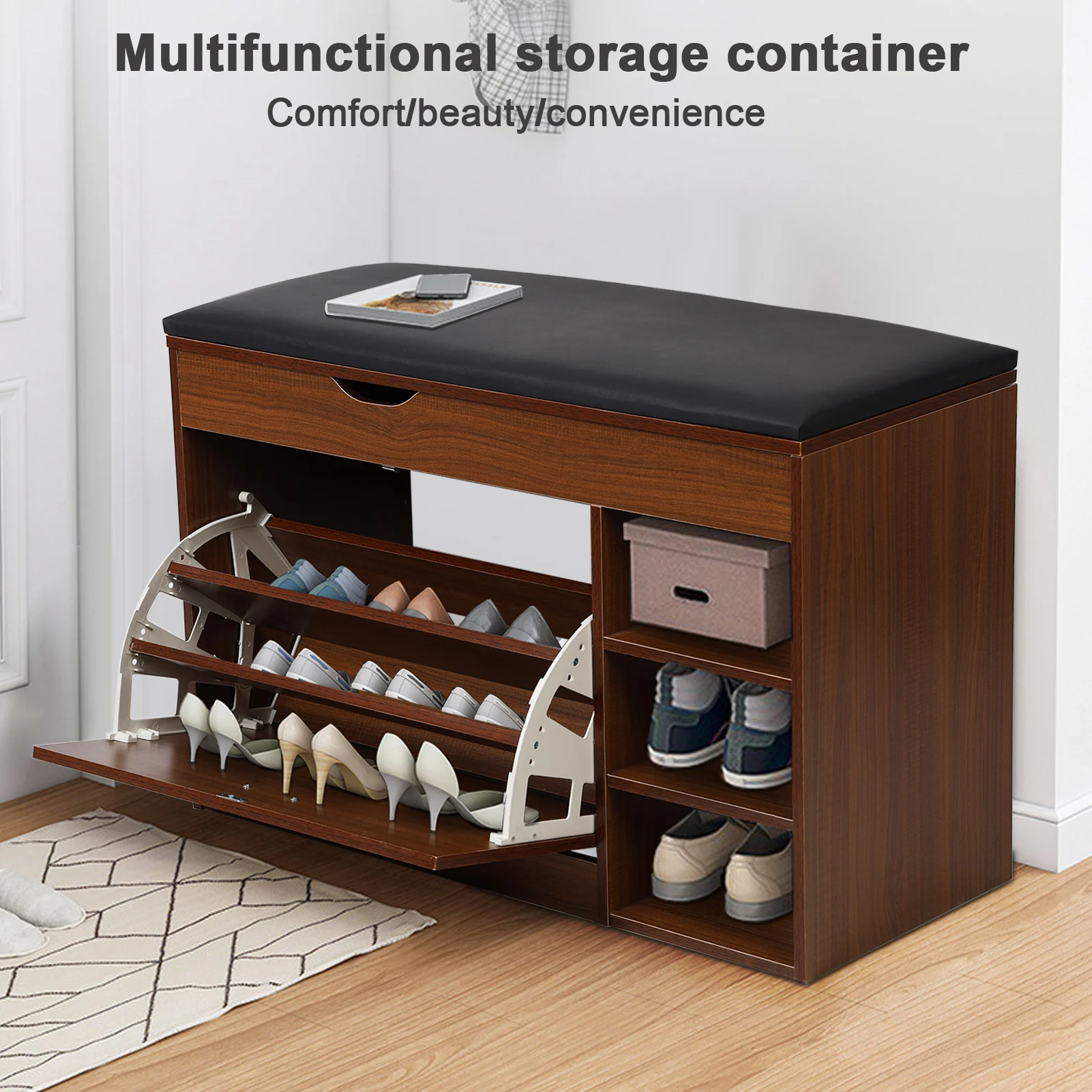
For homes where the entryway bench serves multiple purposes, including temporary seating for guests or a reading nook, a shoe bench with cushion offers exceptional versatility. To maintain the appearance and functionality of these pieces, follow recommended upholstered bench maintenance practices, including regular vacuuming and prompt attention to spills.
Multifunctional Shoe Storage Benches: Complete Entryway Solutions
Multifunctional shoe storage benches expand beyond basic seating and shoe organization to become comprehensive entryway command centers. These all-in-one designs incorporate additional features to address multiple storage and organizational needs in a single furniture piece.
These enhanced benches typically combine shoe storage with various supplemental features:
- Coat hooks or racks: Vertical storage for jackets, hats, and bags
- Umbrella stands: Dedicated spaces for wet umbrellas with drip trays
- Accessory drawers: Small compartments for keys, gloves, and mail
- Mirror panels: Convenient last-minute appearance checks before leaving
- Hat shelves: Upper storage for seasonal headwear
- Charging stations: Built-in USB ports and cord management for devices
The primary advantage of these comprehensive pieces is space efficiency—they consolidate multiple furniture functions into a single footprint, making them ideal for smaller homes or apartments where space optimization is crucial.
When selecting a multifunctional bench, consider your household’s specific entry and exit routines. Families with children might prioritize lower hooks and simplified storage, while those in rainy climates might value dedicated umbrella storage with moisture management features.
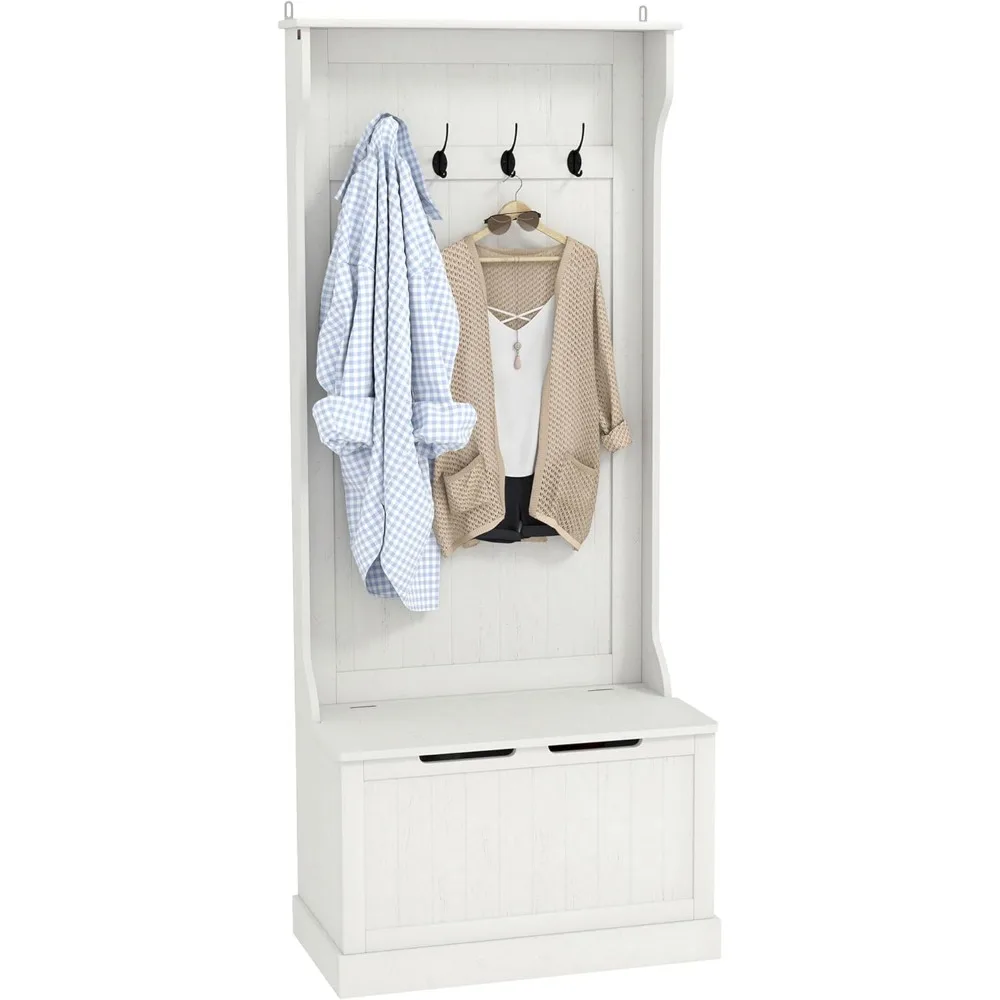
The versatility of entry shoe storage furniture solutions makes them particularly valuable in homes with limited square footage. A well-designed coat rack shoe bench combination can eliminate the need for multiple pieces of furniture while creating an organized, functional entry point for your home.
Entryway Bench with Cushion, Mudroom Bench with Cushion, Shoe Bench for Entryway
$1,186.63 Select options This product has multiple variants. The options may be chosen on the product pageCoat Rack Shoe Bench, Corner Entryway Bench, Corner Hall Tree, Shoe Bench for Entryway
$313.58 Select options This product has multiple variants. The options may be chosen on the product pageEntryway Bench with Back, Modern Entryway Bench, Shoe Bench for Entryway
Price range: $463.13 through $474.44 Select options This product has multiple variants. The options may be chosen on the product pageShoe Storage Bench for Entryway
$459.02 Select options This product has multiple variants. The options may be chosen on the product pageEntryway Bench with Shelf Storage, Shoe Bench for Entryway, Shoe Storage Bench
$194.08 Select options This product has multiple variants. The options may be chosen on the product pageCorner Entryway Bench, Entryway Bench with Cushion, Modern Entryway Bench, Shoe Bench for Entryway
$476.34 Select options This product has multiple variants. The options may be chosen on the product page
Specialized Boot and Tall Footwear Storage Options
Standard shoe storage benches often struggle to accommodate taller footwear like winter boots, rain boots, and knee-high fashion boots. These items require specialized storage solutions to prevent damage to the shafts while maintaining organization.
Boot-friendly storage designs employ several innovative approaches:
- Adjustable or removable shelving: Allows customization of compartment height
- Taller cubby sections: Dedicated spaces with 12-18” height clearance
- Boot hooks: Allow boots to hang upside down, preserving shape and saving space
- Angled boot compartments: Support boots at proper angles to maintain shape
- Removable boot trays: Collect moisture and dirt from wet footwear
Proper boot storage offers significant benefits beyond organization. It extends the lifespan of expensive footwear by preventing shaft creasing, maintaining shape, and allowing proper air circulation around materials like leather and suede.
Seasonal boot storage presents unique challenges. Winter boots often enter the home wet from snow and treated with salt, requiring drainage and drying features. Rain boots need similar moisture management, while fashion boots benefit from shaft support to prevent creasing and maintain appearance.
For households with significant boot collections or those in climates requiring frequent boot wear, specialized mudroom benches with shoe storage provide tailored solutions. These designs often incorporate more robust materials and moisture-resistant features to handle the demands of wet, muddy, or snow-covered footwear.
Material Selection Guide: Durability Meets Aesthetics
The material of your shoe storage bench significantly impacts its durability, appearance, maintenance requirements, and price. Understanding the characteristics of each option helps you make an informed choice aligned with your practical needs and design preferences.
Solid Woods
– Oak: Exceptional durability with prominent grain patterns; resists dents and scratches; moderately heavy; price range: $$$-$$$$
– Pine: Lighter weight with a casual, rustic appearance; softer and more susceptible to dents; price range: $$-$$$
– Walnut: Rich, dark tones with sophisticated grain patterns; excellent durability; requires occasional oil treatment; price range: $$$$-$$$$$
– Bamboo: Technically a grass but used similarly to hardwood; eco-friendly; highly resistant to moisture; price range: $$$-$$$$
Engineered Wood Products
– MDF (Medium-Density Fiberboard): Smooth surface ideal for painting; moderately durable; sensitive to moisture; price range: $-$$
– Plywood: Constructed from wood layers for increased stability; good durability; various veneer options; price range: $$-$$$
– Particleboard with laminate: Budget-friendly option; moderate durability; requires edge banding for finished appearance; price range: $-$$
Metals
– Steel: Industrial aesthetic; exceptional durability; typically powder-coated for rust resistance; price range: $$-$$$
– Iron: Traditional appearance; very heavy; may require occasional rust treatment; price range: $$$-$$$$
– Aluminum: Lightweight modern appearance; naturally rust-resistant; price range: $$-$$$
Considerations by Placement Location:
– High-traffic entryways: Prioritize solid hardwoods, steel, or quality plywood constructions
– Protected indoor areas: More flexibility for decorative woods or upholstered options
– Mudrooms: Select moisture-resistant materials like treated hardwoods, certain metals, or specialized composites
Our wood entryway bench collection offers a range of options crafted from quality materials selected for both beauty and longevity. The right material choice balances your aesthetic preferences with the practical demands of your specific entryway environment.
Matching Bench Types to Specific Home Needs and Spaces
Finding the perfect shoe storage bench requires matching the right design to your specific home configuration and family needs. Consider these targeted recommendations for common scenarios:
Small Space Solutions
– Look for benches under 36” wide with vertical storage organization
– Consider wall-mounted designs that keep floor space open
– Prioritize models with sliding doors rather than swing-out options
– Seek multifunctional pieces that eliminate the need for separate furniture items
– Evaluate corner units that maximize otherwise unused angular spaces
Family-Friendly Options
– Select benches with at least 9-12 shoe compartments for multiple users
– Consider assigned cubbies with name tags or color-coding for each family member
– Prioritize easy-clean materials and removable components
– Look for rounded corners and stable construction for safety
– Choose bench heights appropriate for children’s independent use
Mudroom and High-Traffic Considerations
– Select water-resistant materials like treated wood or metal
– Look for removable liner trays for easy cleaning
– Prioritize open designs for better air circulation around damp shoes
– Consider additional features like boot compartments and umbrella stands
– Select darker finishes or patterns that conceal dirt and scuff marks
Style-Forward Selections
– For modern spaces: Clean lines, mixed materials, and minimalist hardware
– For traditional homes: Classic wood tones with detailed craftsmanship
– For farmhouse style: Distressed finishes, bin-style storage, and bench seating
– For industrial aesthetics: Metal frames, reclaimed wood, and functional hardware
– For transitional designs: Neutral finishes with subtle decorative elements
The most successful entry storage benches for families combine practical features with design elements that complement your home’s architecture and interior style. Taking time to evaluate both functional needs and aesthetic preferences ensures your selection enhances your space both visually and organizationally.
Advanced Features Worth Considering
Beyond basic storage and seating capabilities, today’s premium shoe storage benches offer innovative features that enhance functionality and user experience:
- Adjustable shelving systems allow customization of compartment heights to accommodate changing seasonal footwear from sandals to boots
- Built-in ventilation channels promote air circulation around shoes, reducing odors and allowing moisture to evaporate from damp footwear
- Soft-close hinges and drawer mechanisms prevent slamming and pinched fingers, particularly valuable in households with children
- Pull-out shoe racks that extend fully for complete visibility of all stored items
- Removable washable liners capture dirt and moisture for easy cleaning
- Built-in lighting activated by motion sensors illuminates shoe selection in dark entryways or closets
- Modular expansion capabilities allow the system to grow with your needs
Quality indicators worth investigating include:
- Weight capacity ratings of 250+ pounds for seating surfaces
- Dovetail or mortise-and-tenon joinery in wooden components
- Full-extension drawer slides with ball bearings
- Reinforced corners and stress points
- Multi-step finishing processes for better durability
- Water-resistant treatments on wooden surfaces
Assembly complexity varies significantly between models, from simple four-leg attachments to complex drawer installations. Consider your comfort with assembly tasks when selecting, or factor in professional assembly costs for more complex units.
FAQ: Common Questions About Shoe Storage Bench Selection
How many pairs of shoes can the average storage bench accommodate?
Most standard shoe storage benches (36”-48” wide) accommodate 6-12 pairs of adult shoes, depending on the design. Open shelves typically hold 6-8 pairs, while cubby systems may fit 9-12 pairs through more efficient compartmentalization. For households with larger shoe collections, look for designs with multiple tiers or consider supplementing with additional storage solutions.
Are wooden or metal shoe storage benches more durable for heavy daily use?
Both materials offer excellent durability when properly constructed. Quality hardwood benches provide good weight distribution and natural resistance to daily wear, while steel-framed benches offer superior structural strength. The determining factor is often construction quality rather than material—look for reinforced joints, quality hardware, and weight ratings of 250+ pounds regardless of material choice.
Should I choose open or closed storage for my entryway bench?
This depends primarily on your priorities and environment. Open storage provides better ventilation for wet shoes and quicker access, making it ideal for active households and damp climates. Closed storage creates a tidier appearance and protects shoes from dust, making it better for formal entryways and homes with pets. Many homeowners find that a hybrid design with some open and some closed storage offers the best of both worlds.
Can outdoor shoe storage benches withstand weather exposure?
For protected outdoor areas like covered porches, look for benches constructed from weather-resistant materials such as teak, cedar, treated pine, powder-coated metals, or high-density polyethylene. These materials resist moisture damage and UV fading. For fully exposed locations, only specialized outdoor furniture with proper sealing and drainage features will provide lasting performance. Always check manufacturer specifications regarding outdoor suitability.

